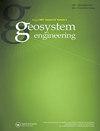Experiments of Sand Distribution among Perforation Clusters in a Horizontal Pipe
IF 1.1
Q3 GEOSCIENCES, MULTIDISCIPLINARY
引用次数: 0
Abstract
ABSTRACT Multistage horizontal fracturing is the key technique in developing shale gas reservoirs. Although the parameters of perforation clusters are almost the same in each stage, production from each perforation cluster is vastly different. One of the factors that influences gas production between perforation clusters is the uneven proppant distribution among perforation clusters. In order to investigate proppant distribution among perforation clusters, the theory on proppant settling along horizontal lateral is presented to calculate the minimal critical velocity. Meanwhile, experiments on 20/40 and 40/70 mesh sand distribution with different concentrations were conducted at different pumping rates utilizing slick water fluids. The experimental parameters of perforation cluster, such as perforation density, length, and distance between clusters are scaled to simulate the actual treatment in shale gas fracturing. Therefore, the experimental results in this study can represent the actual distribution of proppants among perforation clusters. The results are analyzed, and some conclusions are presented. Pumping rate and viscosity are the two important factors that can have a big impact on the sand distribution. At a lower pumping rate, more sand was deposited at the first perforation cluster, whereas at a high pumping rate, more sand was deposited at the third cluster. The viscosity of slick water will also affect sand distribution largely. At a low fluid viscosity, sand distribution was varied much among clusters at the same pumping rate, and sand tended to distribute evenly when the fluid viscosity is increased. Therefore, in order to distribute proppants evenly among perforation clusters, the treatment parameters such as the pumping rate or the viscosity of slick water fluid can be adjusted accordingly.水平管射孔簇间砂粒分布的实验研究
多级水平井压裂是页岩气藏开发的关键技术。虽然每个阶段射孔簇的参数几乎相同,但每个射孔簇的产量却有很大不同。影响射孔簇间产气的因素之一是支撑剂在射孔簇间分布不均匀。为了研究支撑剂在射孔簇中的分布,提出了支撑剂水平侧向沉降理论,计算了最小临界速度。同时,利用滑溜水进行了不同浓度、不同泵送速率下的20/40和40/70目配砂实验。对射孔簇的实验参数,如射孔密度、射孔长度和射孔簇之间的距离进行了缩放,以模拟页岩气压裂的实际处理。因此,本研究的实验结果可以代表支撑剂在射孔簇中的实际分布情况。对结果进行了分析,得出了一些结论。泵送速率和粘度是影响砂体分布的两个重要因素。在较低的泵送速率下,第一个射孔簇沉积了更多的砂,而在高泵送速率下,第三个射孔簇沉积了更多的砂。滑溜水的粘度对砂体分布也有很大影响。当流体粘度较低时,在相同泵送速率下,砂体在簇间分布差异较大,随着流体粘度的增大,砂体分布趋于均匀。因此,为了在射孔簇中均匀分布支撑剂,可以相应地调整泵送速率或滑溜水粘度等处理参数。
本文章由计算机程序翻译,如有差异,请以英文原文为准。
求助全文
约1分钟内获得全文
求助全文

 求助内容:
求助内容: 应助结果提醒方式:
应助结果提醒方式:


